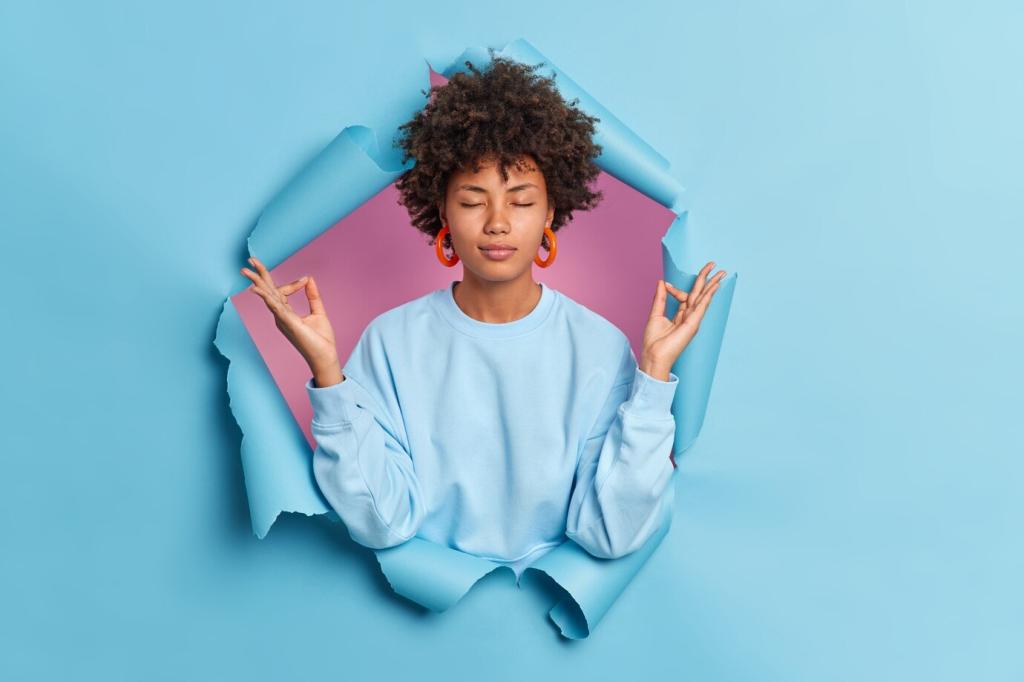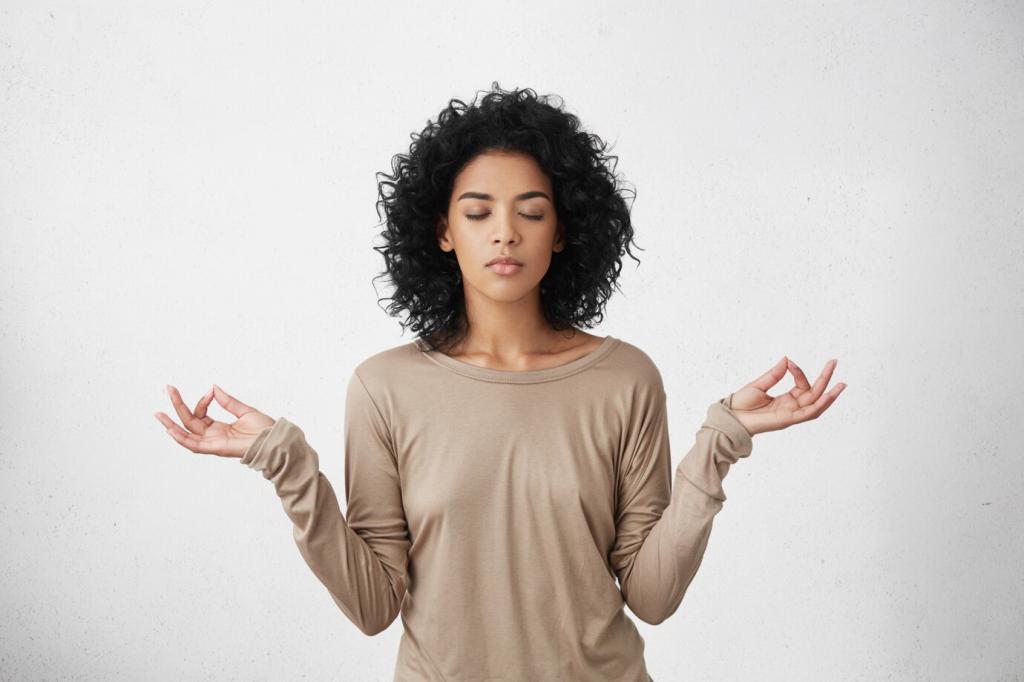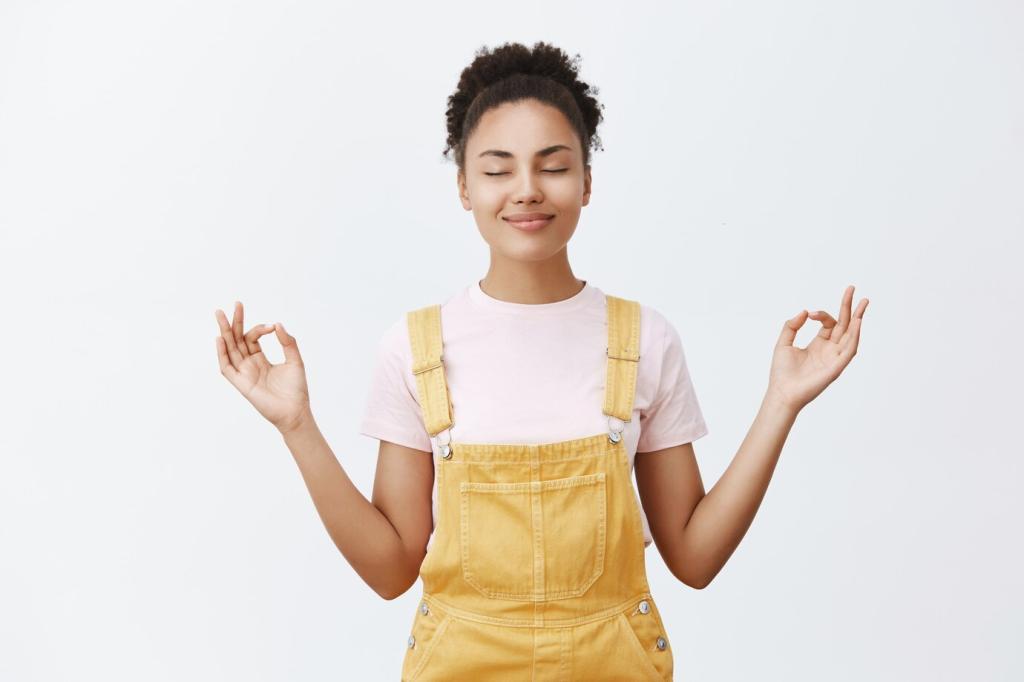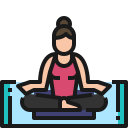Mindful Yoga Poses to Alleviate Stress
Chosen theme: Mindful Yoga Poses to Alleviate Stress. Welcome to a calm corner of the internet where breath, gentle movement, and attention work together to soften tense edges. Today we explore simple, grounded poses and mindful practices that help you exhale the day. Settle in, breathe once, and consider subscribing to keep these soothing rituals arriving right when you need them.

Why Mindful Movement Calms the Nervous System
Breath as a Reset Switch
Slow, lengthened exhalations stimulate the parasympathetic nervous system, guiding your body from fight‑or‑flight into rest‑and‑digest. In mindful yoga, pairing breath with movement turns each pose into a gentle signal: you are safe, you can soften, you can release. Try counting a four‑beat inhale and a six‑beat exhale while noticing your shoulders subtly drop.
Interoception Builds a Sense of Safety
Interoception is your felt sense of internal signals: heartbeat, temperature, tightness, ease. When you track these sensations kindly during mindful poses, your brain updates the story that home is safe. That safety feeling reduces stress reactivity over time, replacing autopilot tension with curious presence and a compassionate inner voice.
A Commute Story that Changed the Evening
After a crowded train ride, Maya tried five mindful breaths in Mountain Pose before unlocking her door. She noticed the rush in her chest, softened her jaw, and let her exhale lengthen. Ten minutes of gentle cat‑cow and Child’s Pose later, dinner felt lighter, conversation kinder, and bedtime remarkably earlier.
Knees wide or together, forehead supported on a block, and arms wherever they feel restful. Count your breaths, letting each exhale spread through your back ribs. Notice the warm, anchored feeling across your forehead. If thoughts race, whisper silently, “In for four, out for six,” and feel your belly soften toward the mat.
Foundational Poses to Begin with Ease
Place hands on a wall or chair to reduce hamstring strain and cue a long spine. Bend your knees generously and imagine your hips drifting back as your heart bows forward. Let your head feel heavy and your eyes soften. With each exhale, invite your neck to release gripping and your jaw to unclench.
Foundational Poses to Begin with Ease

Minutes 0–5: Arrival and Grounding
Begin seated or in Child’s Pose. Notice five things you can feel: mat under knees, air on skin, breath at nostrils, fabric on shoulders, heartbeat hum. Inhale for four, exhale for six, three rounds. Transition to Cat‑Cow, tethering movement to breath like waves meeting shore—predictable, calming, familiar.

Minutes 5–10: Soft Mobility and Spacious Focus
Flow through low lunge, half split, and a gentle twist, lingering where breath feels most helpful. Keep your gaze soft and your jaw relaxed. Each transition arrives only after your exhale finishes, like turning a page slowly. If intensity spikes, bend more, pad your knees, or return to Child’s Pose briefly.

Heart Rate Variability and Vagal Tone
Practices that lengthen exhalation and emphasize safe, slow movement often improve heart rate variability, a marker of adaptability. Mindful yoga leverages breath pacing and gentle poses to nudge vagal pathways, enhancing your capacity to return to baseline after a stressor. Consistency matters more than duration or intensity.

Cortisol, Perceived Stress, and Sleep
Regular mindful movement can reduce perceived stress and support healthier cortisol rhythms, especially when combined with sleep‑friendly rituals. Evening sessions that finish with downshifting poses—like forward folds or legs‑up variations—may help quiet overactive thinking and ease transitions into restorative sleep without overstimulation.

Attention Training Meets Body Awareness
Mindfulness strengthens attentional control, and interoceptive practices refine body awareness. Together in yoga, they create a feedback loop: noticing tension early lets you intervene sooner and more gently. Over weeks, that loop becomes a protective habit, reducing the frequency and intensity of stress spikes in daily life.
Mindful Micro‑Practices for Busy Days
Sit tall, place feet flat, and loop your arms over the back of the chair for a gentle chest opener. Inhale into your collarbones; exhale and soften between your shoulder blades. Drop your gaze to relax the eyes. Three slow breaths can recalibrate posture and mood without leaving your seat or schedule.
In Tadasana, feel weight equally through both feet. On an inhale, sweep arms to shoulder height; on an exhale, release them down. Match movement to breath, not the clock. After six cycles, notice calmer thinking and steadier energy, like smoothing ripples across a lake with quiet, patient hands.
Let warm water cue attention down your body: scalp, neck, shoulders, ribs, belly, hips, thighs, calves, feet. Inhale curiosity, exhale softening. If you find a tense zone, let the water linger as you lengthen the exhale slightly. Tiny, consistent scans reduce hidden bracing that accumulates stress all day.



Common Pitfalls and Kind Corrections
Your nervous system does not grade alignment exams; it listens for safety cues. Props, bent knees, and smaller ranges can deliver those cues more clearly than forcing depth. When you prioritize breath quality and comfort, your body learns that practice time equals refuge, not another arena for self‑critique.
Common Pitfalls and Kind Corrections
Sensation can be stretchy, warm, or effortful; pain is sharp, pinchy, or alarming. If breath becomes choppy or you brace your jaw, back off immediately. Swap shape, add support, or rest. Protecting your boundaries today builds trust that encourages deeper relaxation tomorrow, creating sustainable stress relief.
Make It Yours: Reflection and Community
01
Set a Gentle Intention You Can Remember
Pick a phrase that feels like a hand on your shoulder: “Soften the edges,” or “Exhale more than I inhale.” Repeat it at the start and end of practice. Let it shape your choices, from prop use to pace, so stress relief becomes your compass rather than an afterthought.
02
Track Triggers and Wins in a Tiny Journal
Note what spiked your stress and which pose helped. Over weeks, patterns emerge: maybe supported forward folds melt tension faster than twists, or morning breathwork changes your whole afternoon. Celebrate small wins in writing to cement the memory, then adjust your sequence accordingly for greater ease.
03
Share Your Story and Learn from Others
Comment with your favorite calming pose or a moment when mindful breathing changed your day. Ask questions, trade playlists, and offer gentle encouragement. Community turns private practice into shared resilience, reminding us that stress is universal, and steady relief grows stronger together.
Next Steps: Build a Sustainable Ritual
Keep a mat unrolled if possible, plus a blanket, block, and strap within easy reach. Add one soft light and something that signals safety—maybe a photo or a plant. When your space whispers welcome, your body arrives ready to unwind without negotiation or delay.
Next Steps: Build a Sustainable Ritual
Pair your practice with existing routines: after coffee, before lunch, or when you close your laptop. Set a kind, non‑jarring chime and choose music that supports slower breathing. These cues make mindful movement feel inevitable, transforming intention into an easy, everyday rhythm.
Next Steps: Build a Sustainable Ritual
Subscribe for weekly mini‑flows, science‑backed tips, and stories that honor real‑life stress. Reply with topics you want explored, or share a pose that soothed you today. Your voice shapes this space, ensuring our mindful yoga library grows practical, inclusive, and genuinely calming.
